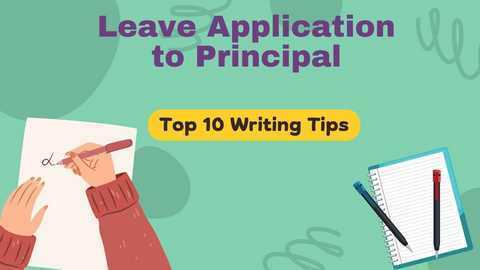Writing a proposal is an essential skill for anyone who wants to pitch an idea or sell a product or service.
A well-written proposal can help you secure funding, win new clients, or even land a job.
However, writing a proposal can be a daunting task, especially if you’ve never done it before.
In this article, we’ll provide you with 10 best tips & one bonus tip for writing a proposal, complete with practical examples.
How to Write a Proposal Letter |10 Best Tips with Examples

Here are the best tips tips for you and if you incorporate them into your proposal letter, you can create a proposal that effectively demonstrates your expertise, builds credibility, and ultimately persuades your audience to say yes to your proposal.
1. Understand Your Audience
The first and most important step in writing a proposal is to understand your audience.
Who will be reading your proposal, and what do they care about?
What do they need to know in order to make a decision?
For example, if you’re writing a proposal to a potential client, you’ll need to understand their business, their pain points, and how your product or service can solve their problems.
Here’s an example of how understanding your audience can make a difference in your proposal:
Bad Proposal: Our company offers the best SEO services on the market.
We use cutting-edge technology to improve your search engine rankings and drive traffic to your website.
Good Proposal: We understand that your business relies on online visibility to attract new customers.
Our SEO services are designed to help you achieve higher search engine rankings, drive traffic to your website, and ultimately increase your revenue.
We’ve helped dozens of businesses like yours achieve their goals, and we’re confident we can do the same for you.
2. Clearly Define the Problem and Your Solution in your Proposal
In order to convince your audience to take action, you need to clearly define the problem you’re solving and how your solution addresses that problem.
Your proposal should clearly outline the problem your audience is facing, and explain how your product or service will solve that problem.
Here’s an example of how to clearly define the problem and your solution:
Problem: Many businesses struggle to find the time and resources to manage their social media accounts effectively.
Solution: Our social media management services are designed to take the burden off your team, allowing you to focus on running your business.
We’ll create and curate content, engage with your audience, and analyze your results to ensure your social media accounts are driving real business results.
3. Use Simple Language and Clear Formatting
Your proposal should be easy to read and understand.
Use simple language and avoid jargon or technical terms that your audience may not be familiar with.
Break up your text into short paragraphs, use bullet points to highlight key information, and use headers and subheaders to guide your reader through your proposal.
4. Provide a Timeline and Deliverables in Your Proposal Letter
Your proposal letter should clearly outline the timeline for your project and the deliverables you’ll provide.
This will help your audience understand what they can expect from you, and when they can expect it.
Here’s an example of how to provide a timeline and deliverables:
Timeline:
- Week 1: Kick-off meeting and project planning
- Week 2-3: Research and analysis
- Week 4-5: Content creation and design
- Week 6-7: Testing and revisions
- Week 8: Final delivery and project wrap-up
Deliverables:
- Research report
- Content plan
- Designed templates
- Final deliverables
5. Include a Call to Action in your Proposal Letter
Your proposal should always include a clear call to action, asking your audience to take the next step.
Whether you’re asking for a meeting, a decision, or a purchase, make it clear what you want your audience to do next.
Here’s an example of how to include a call to action:
Call to Action: We’re excited to work with you to achieve your business goals.
If you’re ready to take the next step, please sign and return the attached contract by [date].
Once we receive your signed contract, we’ll schedule a kick-off meeting to get started on your project.
6. Highlight Your Unique Selling Proposition (USP)
Your proposal should clearly communicate what makes your product, service, or idea unique and better than the competition.
This is known as your Unique Selling Proposition (USP).
Your USP should be prominently featured in your proposal and explained in a way that resonates with your audience.
Example:
USP: Our product is the only one on the market that combines advanced AI technology with a user-friendly interface, allowing businesses to save time and money while increasing productivity.
7. Anticipate Objections and Address Them
Your proposal should anticipate and address any objections or concerns your audience may have.
This shows that you’ve thought through all the possible scenarios and are prepared to address any issues that may arise.
By addressing potential objections upfront, you can increase the likelihood that your audience will say yes to your proposal.
Example:
Objection: Your proposed solution seems too expensive.
Response: While our solution may have a higher upfront cost than some alternatives, it will ultimately save you money in the long run by increasing efficiency and reducing labor costs.
Additionally, our solution is backed by a proven track record of success and a satisfaction guarantee.
8. Use Visual Aids to Support Your Proposal
Visual aids such as charts, graphs, and images can help support your proposal and make it more engaging for your audience.
Visual aids can help break up the text and make key information more memorable.
Be sure to use high-quality images and graphics that are relevant to your proposal.
Example:
Visual Aid: A graph showing the increase in revenue for a client who used our SEO services compared to their previous year’s revenue.
9. Show Your Expertise and Authority
Your proposal should demonstrate that you are an expert in your field and have the authority to offer the solution you are proposing.
This can be achieved by showcasing your relevant experience, credentials, and qualifications.
Your audience needs to know that you are the best person for the job.
Example:
Expertise: Our team has over 20 years of experience in digital marketing, including managing successful campaigns for Fortune 500 companies.
Authority: Our team includes Google Certified Professionals, ensuring that we have the expertise to optimize your digital presence for maximum impact.
10. Include Social Proof
Social proof refers to the influence that other people’s opinions, recommendations, or actions can have on our own behavior.
Including social proof in your proposal can help build credibility and trust with your audience.
This can be achieved by including testimonials, case studies, or references from previous clients or customers.
Example:
Social Proof: “Working with XYZ Company was a game-changer for our business.
Their solution helped us increase our revenue by 30% in just six months. We highly recommend their services.” – Raman Khattar, CEO of ABC Company
Bonus Tip: Proofread and Edit your Proposal
Before you send out your proposal, be sure to proofread and edit it carefully.
Typos, grammatical errors, and formatting issues can make your proposal look unprofessional and may turn off your audience.
Take the time to review your proposal multiple times, and consider having someone else read it over as well to catch any mistakes you may have missed.
Proposal for a Project – Sample Format
1. Executive Summary
- Provide a brief overview of the project and its goals
- Summarize the benefits of the project to the client or organization
- Highlight key deliverables and timelines
2. Introduction
- Introduce the project team and their qualifications
- Provide background information on the project and its context
- Explain the need for the project and how it will address a specific problem or opportunity
3. Problem Statement and Objectives
- Clearly state the problem or opportunity that the project is designed to address
- Describe the objectives of the project and how they align with the client or organization’s goals
4. Solution
- Describe the proposed solution in detail
- Explain how the solution will solve the problem or take advantage of the opportunity
- Provide examples and case studies of similar solutions that have been successful in the past
5. Methodology and Deliverables
- Provide a detailed plan for how the project will be executed
- Describe each stage of the project and what will be delivered at each stage
- Provide a timeline for the project and key milestones
6. Budget and Resources
- Provide a detailed breakdown of the project budget
- Explain any assumptions or contingencies that have been built into the budget
- Describe the resources that will be required for the project, including personnel, equipment, and materials
7. Risk Assessment and Mitigation
- Identify any potential risks or challenges that could impact the project
- Provide a plan for mitigating each risk and minimizing its impact on the project
- Describe any contingencies that have been built into the project plan to address unforeseen issues
8. Evaluation and Measurement
- Describe how the success of the project will be evaluated
- Explain what metrics will be used to measure the impact of the project
- Provide a plan for ongoing monitoring and evaluation to ensure that the project remains on track
9. Conclusion and Call to Action
- Summarize the key points of the proposal and the benefits of the project
- Reiterate the call to action and encourage the client or organization to say yes to the proposal
- Provide contact information and next steps for moving forward with the project
Conclusion
In conclusion, writing a proposal may seem like a daunting task, but by following these 10 best tips and using practical examples, you can create a clear, concise, and compelling proposal that will help you achieve your goals.
By incorporating these tips into your proposal writing process, you can create a proposal that effectively communicates your ideas, addresses potential objections, and makes a lasting impression on your audience.
Good luck with your next proposal!




